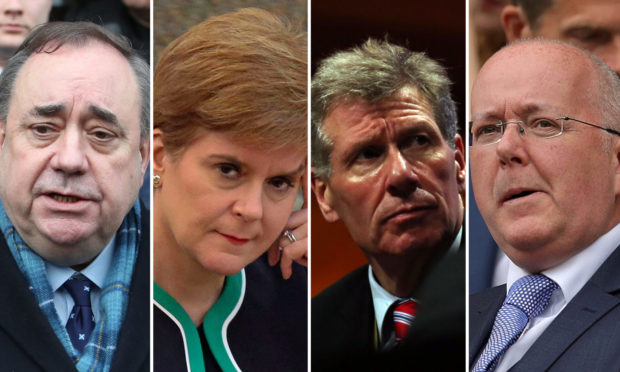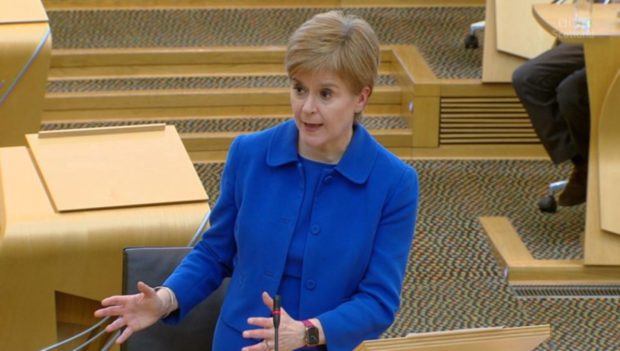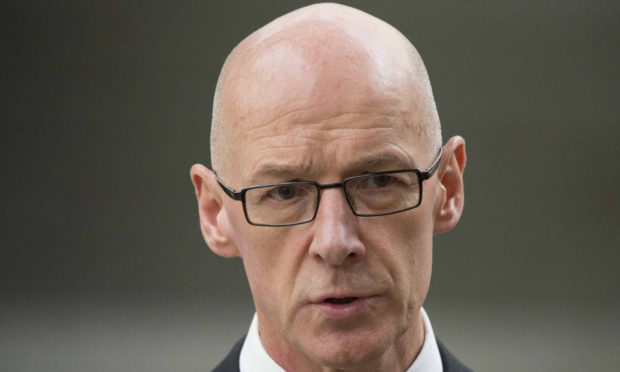In the world of politics, it’s an unchallenged maxim that it’s never the crime that brings you down, it’s the cover-up.
The most famous recent example, of course, is the Watergate scandal.
Whether Richard Nixon was aware of the original break-in at Democratic Party offices when it was planned, or when it happened, is still disputed.
What is not in question is that, in the aftermath, Nixon and various White House staff tried desperately to cover up the event, and this eventually led to the president’s downfall.
Further back in history, the same was true of the Dreyfus case in France, when an attempted establishment cover-up eventually brought about a complete realignment in French politics, after the writer Emile Zola published his famous open letter to the French Government, “J’Accuse”.
Now, I’m not comparing these historic events with those surrounding the investigation into the Salmond affair, but the parallels on the dangers of a cover-up are clear.
The remedy is simple and straightforward. Avoid the drip-drip of allegations over a long period of time, by getting everything – whether damaging or not – into the open immediately.
Take the short-term hit for long-term gain. If that means one or two people are forced to resign or are sacked by the first minister, then surely that’s what has to happen.
No-one wants to see Scotland head for independence more than me. And I firmly believe that Nicola Sturgeon is, by a distance, the best person to lead us to that goal.
But her position is being jeopardised by the almost daily allegations that there were murky goings-on behind the scenes that led to the sexual harassment and criminal charges being laid against Alex Salmond.
We’ve heard that after losing the case at the Court of Session, Permanent Secretary Leslie Evans declared in a private message that they may have lost that battle, but they would win the war.
She denied this was a reference to a campaign against Mr Salmond, but did anyone who heard that claim believe it?
She also denied any special advisers were involved in the government’s response to the Judicial Review, but then had to “clarify” that statement after a newspaper published a Freedom of Information response that proved otherwise.
And what of the documentation Mr Salmond has said would shine a light on what went on behind the scenes within the Scottish Government?
He offered to go to court to gain access to the hundreds, if not thousands, of notes, letters, emails, and WhatsApp messages which he claims will allow the committee the full background to the run-up to the Court of Session case – a case, remember, which has cost the Scottish taxpayer close to a million pounds.
And what was the Scottish Government’s response to this offer? A warning letter to Mr Salmond’s solicitors last week from the Crown Office, threatening them with prosecution.
Despite this threat, information has continued to seep out, most recently in the form of anonymous information sent to MP Kenny MacAskill.
Members of the parliamentary committee have already said that they are frustrated by the Scottish Government’s attitude.
Deputy First Minister John Swinney told them the Scottish Government was “actively exploring what further steps can be taken” for access to the documents, while Lord Advocate James Wolffe said that they should be able to see relevant documents “as far as possible”.
Hardly ringing endorsements of open and transparent government. That’s in addition to what has sounded like obfuscation and evasion from some witnesses appearing before the committee.
Continued leaks, along with information that has the appearance of being unwillingly dragged out of the Scottish Government, do not help.
Far better to give the parliamentary committee all the documents, emails and messages currently being withheld and allow it to get on with doing its job.
Whether that is done by a decision from the Scottish Government, the Crown Office, or the courts doesn’t matter.
Any other course can only encourage the impression, already widely held, that they have something to hide.
Parliamentary investigation
In some ways, the Scottish Government has been fortunate in the timing of the parliamentary investigation.
In recent months, and in all likelihood for some time to come, the news agenda has been and will be set by the Covid crisis.
In its absence, stories such as last week’s letter from the Crown Office would have been on the front page of every newspaper in the country.
But the danger for the Scottish Government is that the Salmond inquiry and the emergence of new and damaging revelations could continue for months, perhaps beyond the end of the year.
By that time, Covid will hopefully have receded and the media’s focus may well return to the Salmond affair.
So, here’s a piece of free advice from a former adviser.
The solution for the Scottish Government is clear. Don’t cover up. Get everything out in the open.
Take the inevitable media hit. It will last only a few days or a couple of weeks, instead of months.
If the revelations result in one or two people losing their jobs, that must surely be a political price worth paying.
Campbell Gunn is a retired political editor who served as special adviser to two first ministers of Scotland.


